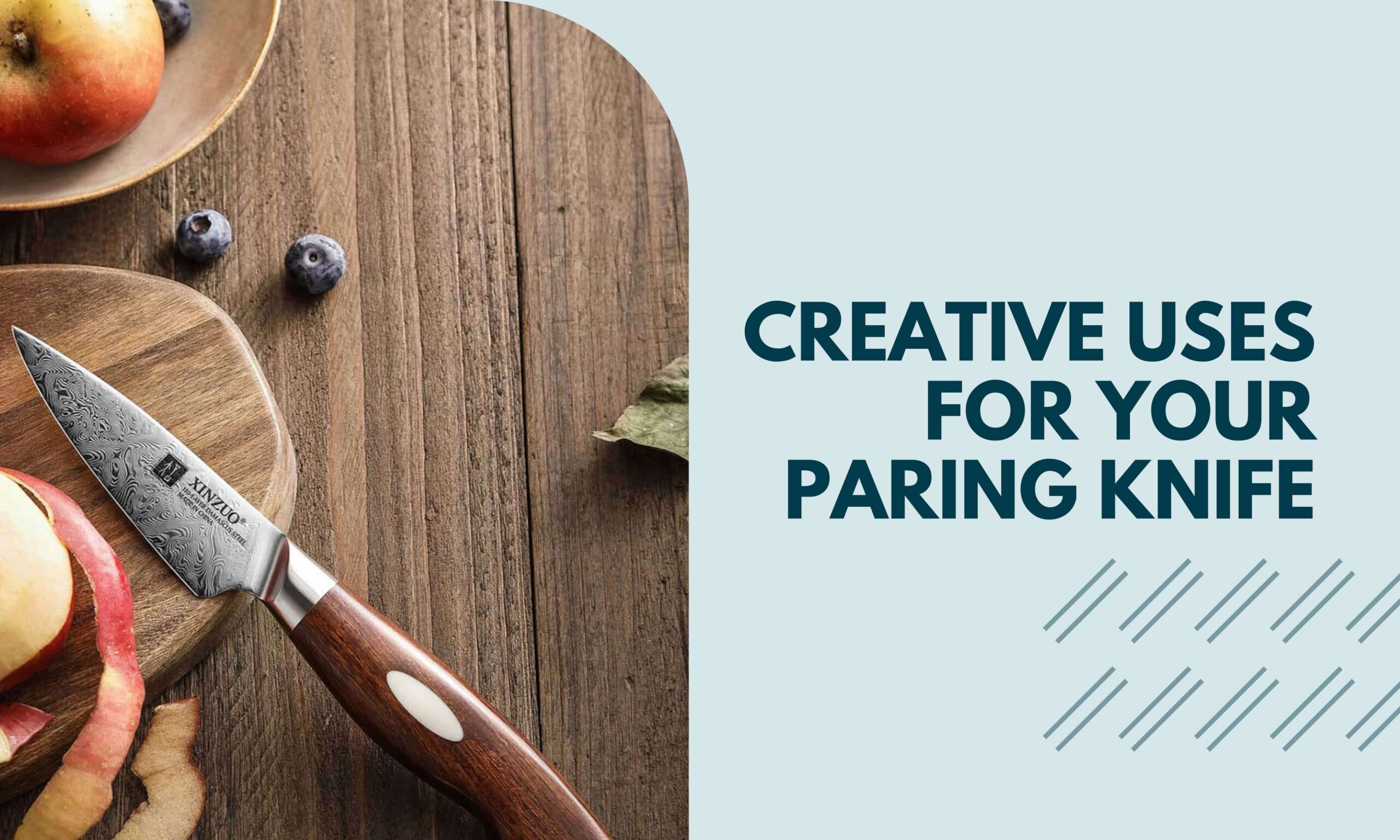Brief Overview of the Importance of a Paring Knife
A paring knife is an essential tool in any kitchen, valued for its precision and versatility. While larger knives are great for heavy-duty tasks, a paring knife excels at delicate work, making it indispensable for intricate cutting, peeling, and shaping tasks.
Kitchen Basics: What is a Paring Knife?
Before we embark on our creative journey, let’s familiarize ourselves with the star of the show. A paring knife is a small, versatile blade characterized by its short length and pointed tip. Available in various types, including spear-point, sheep’s foot, and bird’s beak, each serves a unique purpose in the kitchen.

The Main Characteristics Of A Paring Knife
Paring knives are typically small, with a blade length ranging from 2.5 to 4 inches. They have a pointed tip and a straight edge, allowing for precise control and maneuverability. The blade is usually made of high-carbon stainless steel, ensuring sharpness and durability.
Choosing the Right Paring Knife
When selecting a paring knife, consider the blade material, handle comfort, and overall balance. Look for a knife with a comfortable grip and a sharp, sturdy blade. It’s essential to choose a knife that feels comfortable in your hand and suits your cutting style.
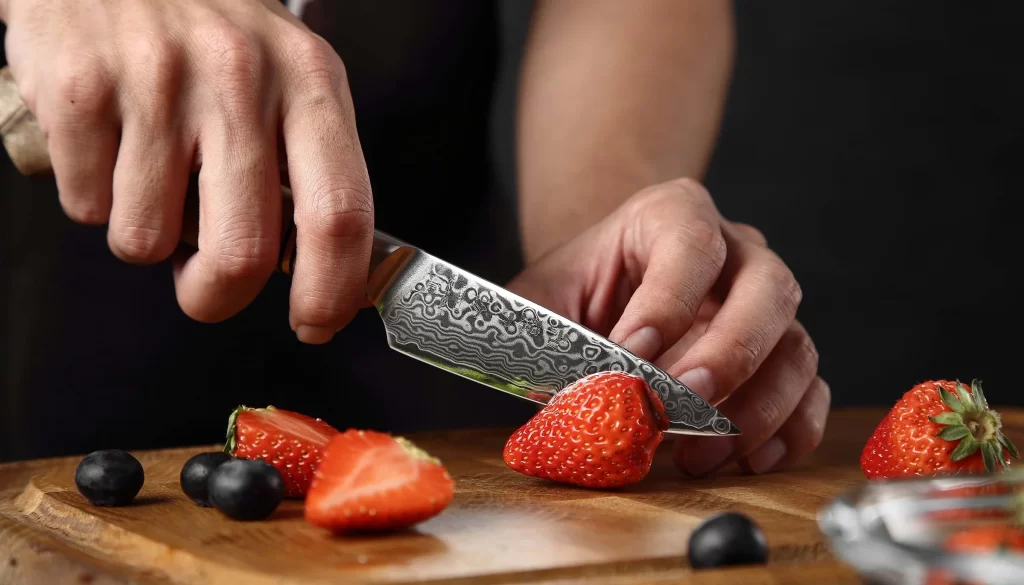
What can a paring knife be used for?
A paring knife is a versatile kitchen tool that is primarily used for intricate tasks that require precision. Common uses include peeling fruits and vegetables, trimming excess fat from meats, deveining shrimp, and creating decorative garnishes. Its small, narrow blade and pointed tip make it well-suited for tasks that demand control and accuracy.
What is a hooked paring knife used for?
A hooked paring knife, also known as a bird’s beak or tourne knife, has a curved, pointed tip that resembles a bird’s beak. This design is ideal for tasks like shaping vegetables, creating decorative cuts, and precisely removing blemishes or eyes from produce. The hooked shape allows for intricate, controlled movements in tight spaces.
What foods are best with a paring knife?
Paring knives are particularly useful for handling small or delicate tasks with fruits and vegetables. They excel in peeling apples, pears, and other fruits with thin skin, deveining shrimp, trimming and shaping mushrooms, and removing seeds or cores from various produce. The precision of a paring knife also makes it valuable for tasks like segmenting citrus fruits.
Is a paring knife used to cut oranges and apples?
Yes, a paring knife is commonly used to cut oranges and apples. Its small, precise blade is well-suited for peeling the skin, removing seeds, and cutting these fruits into smaller, more manageable pieces. The pointed tip of the paring knife is particularly useful for intricate tasks such as removing the eyes from apples or cutting out citrus segments.
Paring Knife Uses
While traditionally known for peeling and trimming, the creative applications of a paring knife are boundless. Let’s explore the myriad ways this kitchen essential can enhance your culinary creations:
- Peeling Fruits and Vegetables: A paring knife’s small size and precise blade make it perfect for peeling fruits and vegetables with minimal waste.
- Trimming: Use a paring knife to trim excess fat from meats or remove blemishes from produce.
- Detail Work: Its precision makes it ideal for intricate tasks like deveining shrimp, coring tomatoes, or creating decorative garnishes.
- Slicing: Paring knives are great for slicing small fruits, such as strawberries or kiwis, with precision.
- Seeding: Use the tip of the knife to remove seeds from fruits and vegetables.
- Fruit and Vegetable Garnishes: Elevate the visual appeal of your dishes with intricate cuts and decorative garnishes.
- Citrus Zesting Techniques: Extract the vibrant flavors of citrus fruits and add a zesty kick to your recipes.
- Herb Chopping Hacks: Master the art of chopping herbs with precision, enhancing the flavor profile of your dishes.
- Crafting Edible Flower Decorations: Introduce a touch of elegance with edible flowers, beautifully crafted with your paring knife.
- Artful Butter Sculptures: Turn butter into edible art, adding a luxurious touch to your dining table.
- Cheese Pairing and Cutting Techniques: Pair cheeses with complementary accompaniments and master the art of cutting various cheese types.
- Paring Knife in Pastry: Achieve precision in pastry-making, from intricate detailing to unique designs.
- DIY Vegetable Roses: Craft visually stunning vegetable roses to adorn your dishes.
- Paring Knife in Seafood Preparation: Perfect the art of deveining, deshelling, and creatively cutting seafood.
- Meat Artistry: Trim, carve, and present meats with decorative flair, turning a simple dish into a culinary masterpiece.
- Paring Knife in Mixology: Extend the use of your paring knife to fruit and garnish preparation, enhancing the presentation of homemade cocktails.
- Paring Knife in DIY Soap Carving: Beyond the kitchen, explore the therapeutic world of soap carving, creating intricate designs with your paring knife.
Tips For Maintaining And Using A Paring Knife
To keep your paring knife in top condition, hand wash and dry it immediately after use. Regularly sharpen the blade to maintain its sharpness, and store it in a knife block or sheath to prevent damage. When using a paring knife, always work on a stable surface and use a cutting board to protect both the knife and your countertop. Maintaining your paring knife is essential for optimal performance and longevity. Follow these tips to ensure your paring knife remains a reliable kitchen companion:
- Regular Cleaning: Clean your paring knife immediately after use to prevent food residue buildup. Use warm soapy water and a soft sponge, avoiding abrasive materials that can damage the blade.
- Proper Storage: Store your paring knife in a knife block, magnetic strip, or blade guard to protect the blade from damage and ensure safety.
- Sharpening: Regularly hone the blade using a honing rod to maintain sharpness. If the blade becomes dull, invest in a quality knife sharpener or seek professional sharpening services.
- Avoid Dishwashers: Handwashing is preferable to dishwasher cleaning. The high water pressure and harsh detergents in dishwashers can damage the blade and handle.
- Use Cutting Boards: Choose softwood or plastic cutting boards to minimize wear on the blade. Avoid hard surfaces like glass or stone, which can lead to premature dulling.
- Safe Handling: Always handle your paring knife with care. Use the proper grip and avoid excessive force to prevent accidents.
10 Creative Uses for Your Paring Knife
Top 6 Paring Knives
Here are six top-rated paring knives known for their quality and performance:
1. Buy Now HEZHEN B38 Damascus Paring Knife Wood Colored Handle
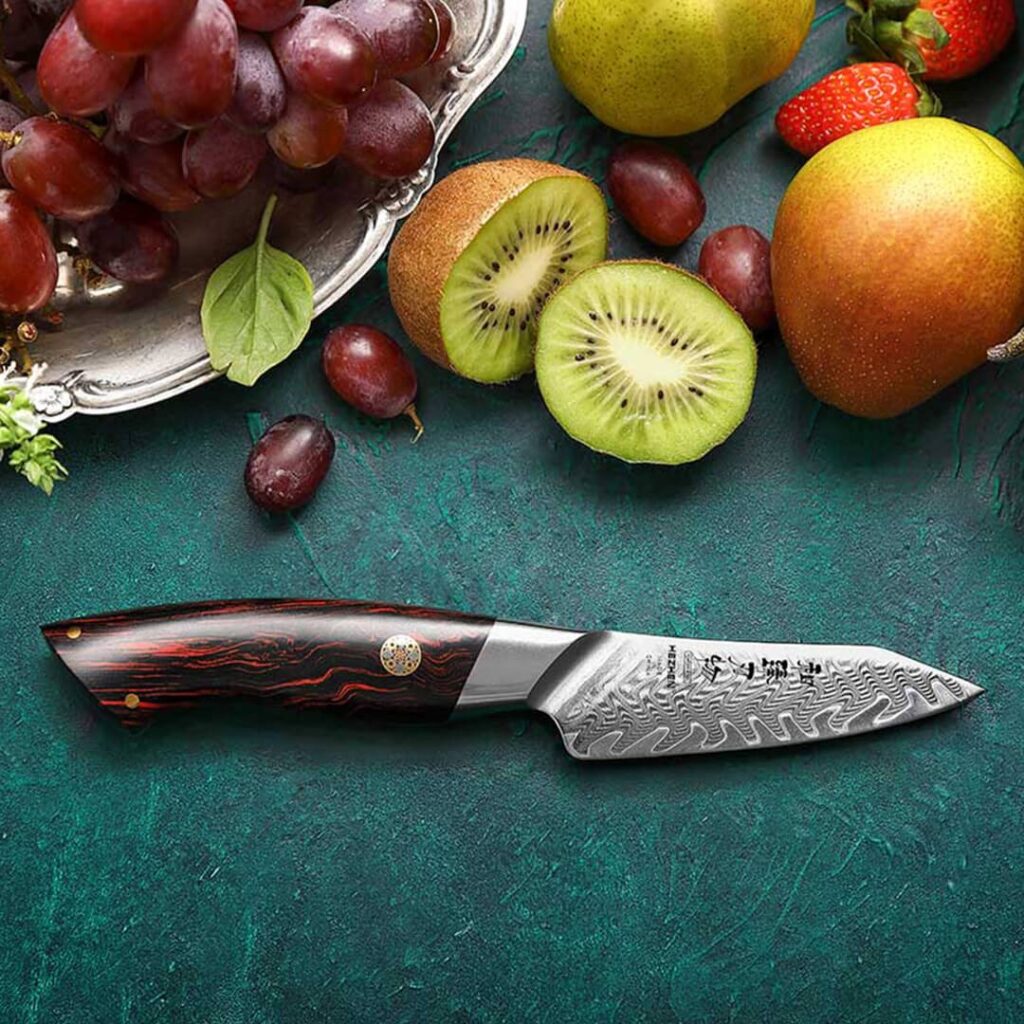
2. Buy Now Xinzuo B46D 8.5″ 110 Layer Damascus Paring Knife Dessert Ironwood Handle

3. Buy Now HEZHEN B38H 67 Layer Japanese Damascus Paring Knife White G10 Handle
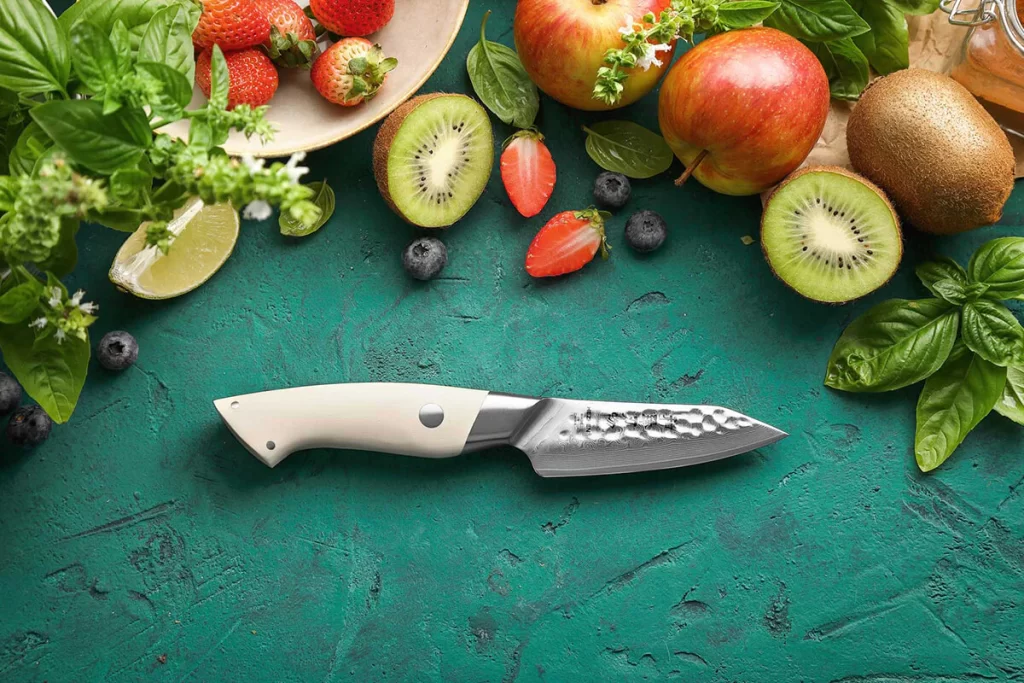
4. Buy Now Buy Now Xinzuo B46W 3.5 inches Damascus Paring Knife
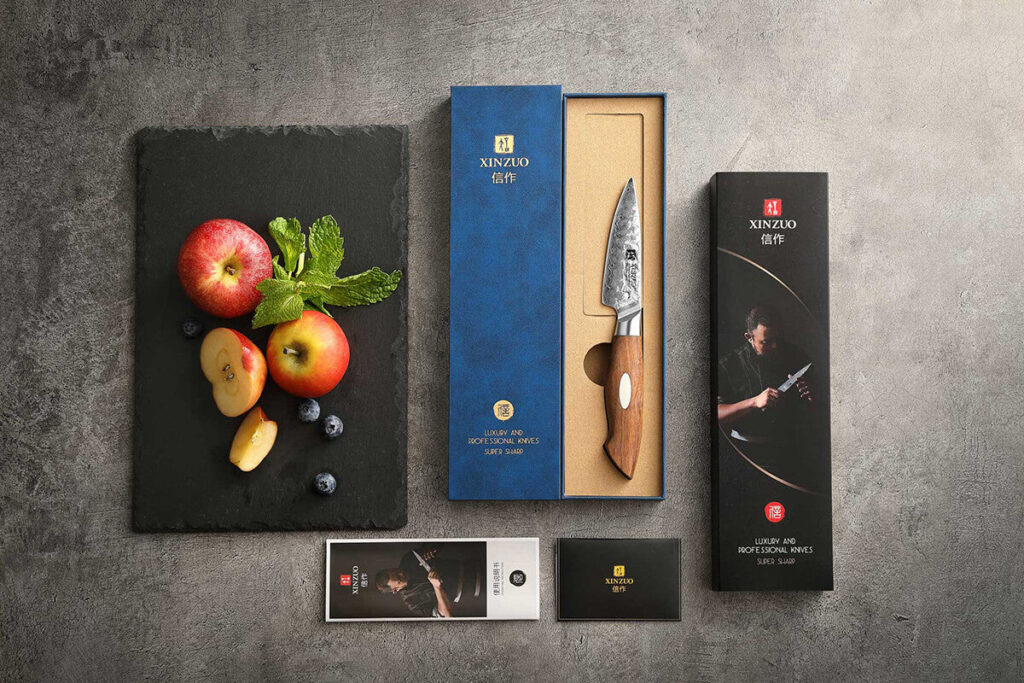
5. Buy Now Xinzuo B35 3.5 inches German Stainless Steel Paring Knife Sandalwood Handle

6. Buy Now Xinzuo B13R 6.5 inches 67 Layer VG10 Japanese Damascus Paring Knife Rosewood Handle
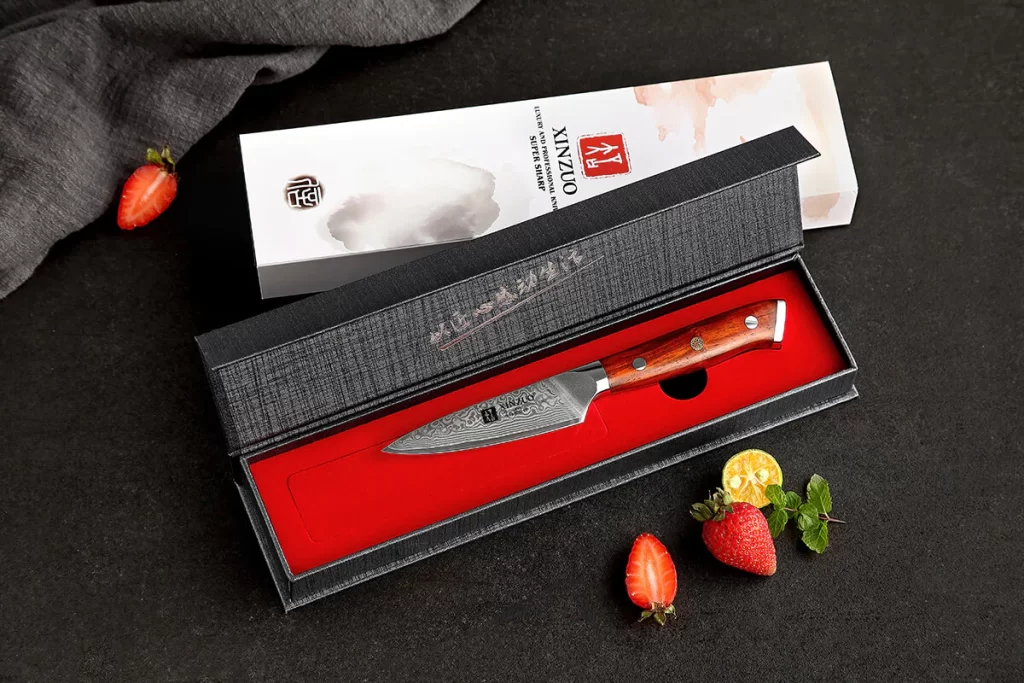
Frequently Asked Questions About Paring Knives
Q: Can a paring knife be used for cutting meat?
A: While a paring knife can be used for trimming and slicing small cuts of meat, it’s not ideal for heavy-duty meat cutting tasks.
Q: How often should I sharpen my paring knife?
A: It’s recommended to sharpen your paring knife every 3-6 months, depending on usage.
Q: Can I use a paring knife to open packages or boxes?
A: Paring knives are designed for food preparation and should not be used for tasks such as opening packages or boxes to avoid damaging the blade.
How should I maintain my paring knife for optimal performance?
Regularly sharpen your paring knife using a honing rod to maintain its sharp edge. Hand wash the knife with mild detergent, avoiding harsh abrasives that can damage the blade. Store it in a knife block or magnetic strip to prevent nicks and maintain its longevity.
Can I use a paring knife for chopping larger ingredients?
While a paring knife is not ideal for chopping large items, it excels at precision tasks like peeling, trimming, and intricate cutting. For chopping, opt for a chef’s knife or santoku knife with a broader blade for better efficiency.
What type of paring knife is best for delicate tasks like peeling and trimming?
A small, pointed paring knife with a sharp blade is perfect for delicate tasks. Look for high-quality stainless steel blades for durability and easy maintenance.
Is it safe to use a paring knife for citrus zesting?
Yes, a paring knife is suitable for citrus zesting. Ensure the knife is sharp for clean cuts, and use a gentle hand to avoid cutting into the bitter pith. It’s a versatile tool for extracting flavorful zest.
Can I use a paring knife to debone poultry?
While a paring knife can be used for deboning, it’s essential to exercise caution. Opt for a boning knife for larger tasks, reserving the paring knife for more delicate deboning work.
How can I enhance the longevity of my paring knife?
To extend the life of your paring knife, hand wash it promptly after use, avoid cutting on hard surfaces, and regularly hone the blade. Proper storage, away from other utensils, will prevent damage and maintain its cutting precision.
#Best Damascus Kitchen Knives, #Kitchen Knives
